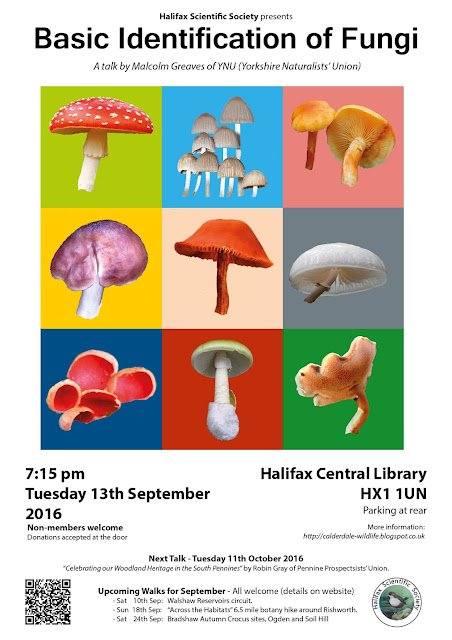Meet us here in front of Clay House, West Vale, Greetland near Elland 10.30 for 10.40.
There is free public parking in the drive, or just across the footbridge at the junction near the traffic lights.
The route is rough and wet in places so good waterproof boots with ankle support are needed. It is approximately 7 miles, so is a bit of a hike.
A picnic stop will be taken around mid-day, so something damp-proof to sit on is useful.
Weather permitting, and taking all walkers' abilities into account, we will go through North Dean Woods, up Maple Dean (aka Norland ) Clough, across Norland Moor, and back via a slightly different route through the woods (on the Calderdale Way.) The speed will vary from moderate to stopped, to take in views or interesting wildlife. Back to Clay House about 15.30.
A dramatic sight we pass is the collapsed Copley Bridge, casualty of the Boxing Day 2015 floods. An interesting one is a recently-identified prehistoric standing stone.
This is a regular event, and includes some of the traditional HSS features such as the picnic, stopping to stare and to note things, and the option of a call at a hostelry on finishing if required.
Report on the Walk:
We got 31 bird species this year ! Notable was a fly-over Peregrine in the woods, it had missing feathers from right inner primaries.
We also found Sparrowhawk and Kestrel. We often get an odd Reed Bunting on the moor, but this time there were several groups around 4 to 8 and up to 15; both sexes.
Previous years totals were 2014 - 18 species, 2015 - 21, 2016 - 26. Interesting how it's going up each year.
Unfortunately we didn't see any flowering plants, but there was one very fine Soft Shield Fern I'd not noticed before.
We also saw a very relaxed herd of six Roe Deer, all does except one buck with his antlers still in velvet.
Number of walkers - very variable, infections and early rain bringing us down to three today !







